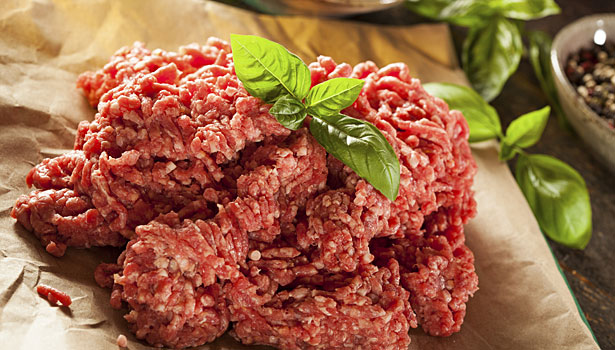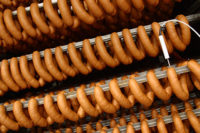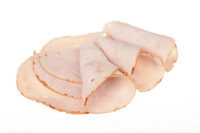In-line grinding is not new technology, but it offers some unique advantages to those who haven’t previously considered it. The in-line grinding process involves a grinder head being placed on a stuffer just ahead of the linking or sizing devices. This streamlines the process by eliminating a traditional grinder and a handling step or two that traditionally have occurred between grinding and stuffing.
With this process, the meat doesn’t have to be transported from the grinder to the stuffer by either dump buckets or conveyors, and as a result, less space is required. Being a closed system reduces the potential for environmental contamination, whether it is biological, physical or chemical.
Prior to the in-line grinding process, meat would be coarse-ground and, if necessary, mixed with other meat and non-meat ingredients. Pre-blended mixtures of varying fat contents might be blended together at this point to meet fat targets. After being mixed, the meat mixture would be loaded into the stuffer and the final grinding step would occur immediately prior to filling the casing.
This concept minimizes the handling of meat mixtures, resulting in less fat smearing under the casing and better particle definition, because this process damages fat particles less than traditional grinding. Meat is only pressurized once with an in-line system, which otherwise would involve pressure building up on the meat both at grinding and stuffing. In-line grinders are fed by stuffers, so meat is not swept over the grinder plate, as occurs with an auger, again contributing to a cleaner cut and less air in the ground mixture.
Pressure on the meat at the grinder plate can also be controlled by the stuffer, which also reduces damage to the fat portion of a meat mixture. Temperature rise of the meat from the stuffer pump, through in-line grinding and linking, is typically less than 2 degrees F. Depending upon the vacuum capabilities of the stuffer, air incorporation into the ground product can be minimized.
The actual grinder may be configured with only one set of knives or may include multiple knife sets, with knives cutting on both sides of the plate. Grinding speed can be controlled by the stuffer, which allows the grinding speed to be adjusted to match the type of linking system needed for different products. The grinder knife speed also can be controlled, and by adjusting knife and stuffer speeds, particle length can be changed. Changes in particle length may change finished product texture and appearance, so product quality should be monitored as changes are made to the stuffer and knife speeds. Bone-elimination systems are available for in-line grinder systems, but some have not been as effective in removing bone and hard particles as the bone-elimination systems on traditional grinders.
Because of the cleaner cut and improved particle definition, in-line grinding works well for fresh sausage. Furthermore, because of the reduction in air incorporated into the ground product, in-line grinding results in more uniform drying of dry sausage products. This system also would work well for producing ground-beef chubs and patties.
In-line grinding would not work for products that require a final mixing step to follow the final grinding step, such as products containing encapsulated acids, cheese, other inclusions, or products that need protein extraction to develop the proper texture and cooking yields, such as cooked sausages. Formulation changes might need to be made to successfully make cooked sausage products with an in-line grinding system.
In-line grinding doesn’t work for all meat processes, but it offers product quality and process efficiency advantages for a lot of processes. Major considerations to compare between in-line and traditional grinding include: product appearance, process efficiency and bone-elimination control.







Report Abusive Comment